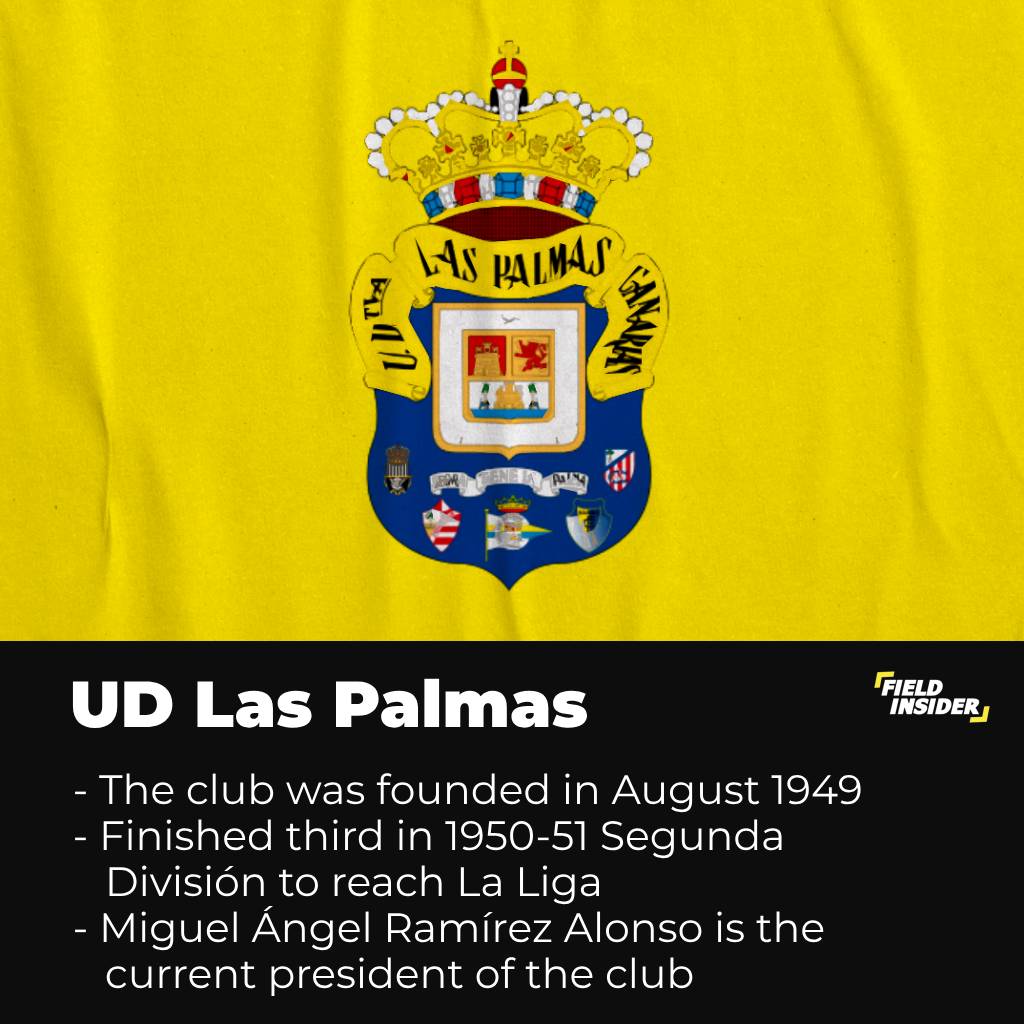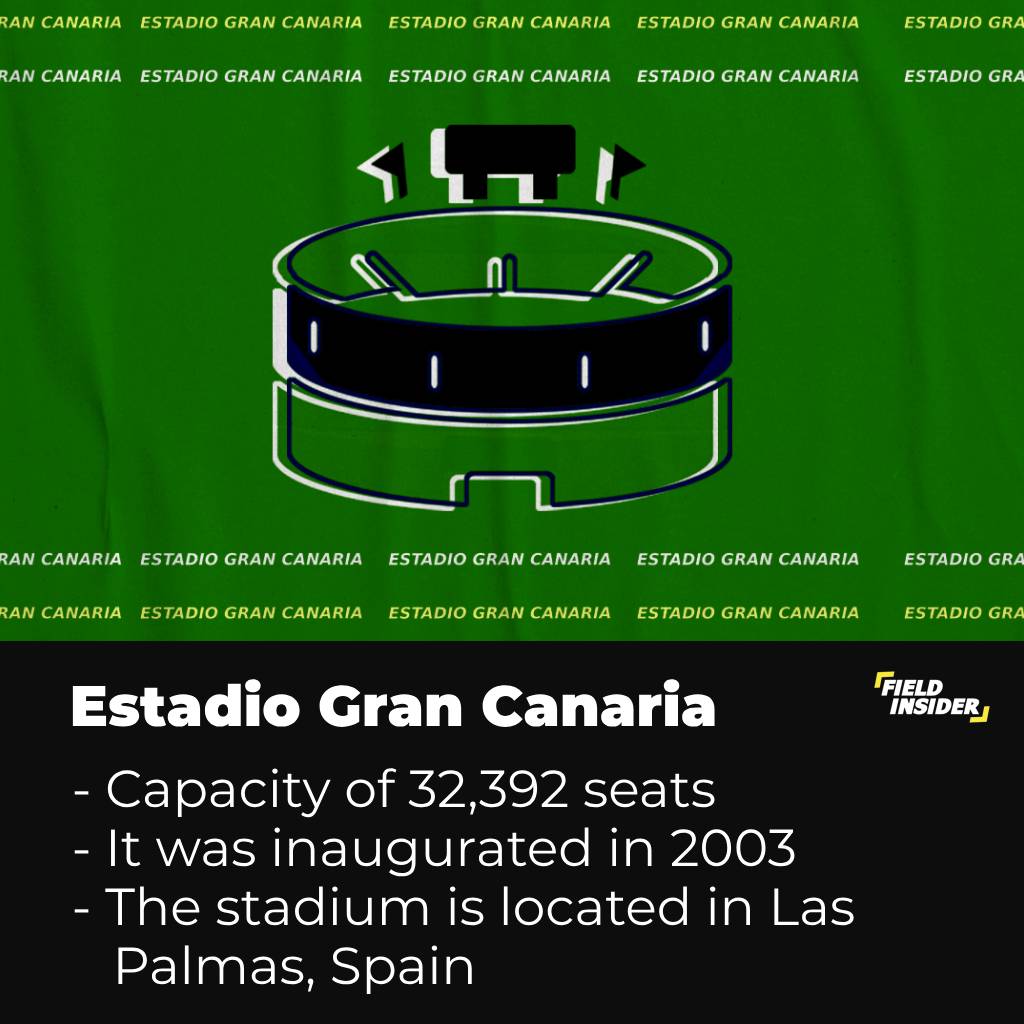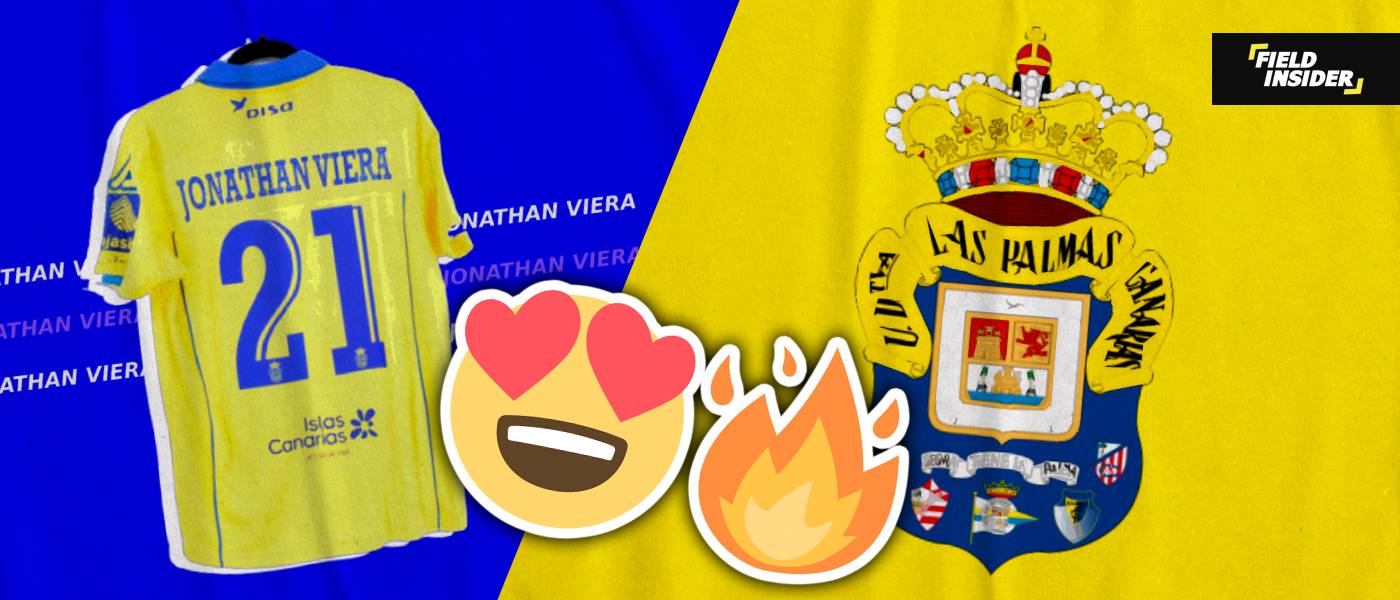Who Are Las Palmas? History, Stats & More
Unión Deportiva Las Palmas, S.A.D., a Spanish football powerhouse, originates from the sun-kissed paradise of Las Palmas in the Canary Islands. Established on August 22, 1949, this La Liga contender calls the iconic Estadio Gran Canaria home, accommodating 32,400 ardent fans.
Their iconic yellow shirts, paired with blue shorts and socks, symbolize their vibrant spirit. With a rich history and a stage set for glory, Las Palmas stands poised to script more chapters of football excellence.
As we are on a spree of covering all the major clubs in La Liga, Las Palmas is our next stop. If you haven’t checked out our coverage of other clubs, you can always head over to our soccer section and read about your favorite club!
As for today, let’s focus on Las Palmas!
Who Are Las Palmas In La Liga?
Unión Deportiva Las Palmas, S.A.D., a revered Spanish football entity hailing from Las Palmas, stands as a unique record holder in La Liga history. The club achieved an astonishing feat by securing consecutive promotions to La Liga in its inaugural two seasons.
A glorious 19-year stint in the competition followed, leaving an indelible mark. Notably, Las Palmas has secured promotion to La Liga on three more occasions, adding eight additional seasons to its illustrious journey. The club’s recent ascent from 2015 to 2018 showcases its relentless pursuit of top-tier excellence.
History of Las Palmas
Early years:
UD Las Palmas, officially established on August 22, 1949, emerged from a merger of five island clubs:
- Club Deportivo Gran Canaria
- Atlético Club de Fútbol,
- Real Club Victoria
- Arenas Club
- Marino Fútbol Club
This union aimed to retain local talent and deter player migration to the mainland.
The club’s name sparked debate, with ‘Deportivo Canarias’ discarded as it encompassed the entire Canary Islands. ‘Las Palmas’ was also considered but rejected due to a defunct club’s prior claim. ‘Unión Deportiva Las Palmas’ was ultimately chosen, honoring the team’s creation and its home city. The inaugural training session occurred on September 16, 1949.
Las Palmas achieved remarkable feats early on. After securing second place in their first Tercera División season (1949-50), they ranked third in Segunda División the following year, earning their debut La Liga entry.
They earned distinction as Spain’s first club with consecutive promotions in their initial two years. While their maiden top-flight season ended in relegation, the team regained their position in 1954, embarking on an illustrious six-year tenure.

Las Palmas in La Liga
Las Palmas FC holds a unique distinction in Spanish football – the sole club to secure consecutive promotions to La Liga in its debut two seasons. This feat marked their entry into the competition, maintaining a 19-year presence until 1982-83.
Following their return to La Liga at the culmination of the 1963-64 seasons as champions, the club embarked on a prosperous phase under Vicente Dauder’s guidance. Their pinnacle was during the 1967-68 season, clinching an impressive third place, trailing only Real Madrid and FC Barcelona.
While the 1990s onwards saw Las Palmas mainly in Segunda División, a six-year stint in Segunda División B and a fleeting return to the top flight from 2000 to 2002 were also witnessed. The club marked historic moments, including a triumphant 4-2 home victory against Real Madrid on 3 October 2001.
Their roller-coaster journey continued, narrowly escaping relegation in the 2009-10 Segunda División season. The most recent chapter unfolded on 27 May 2023, when Las Palmas triumphed by securing the second position in the table on the final match day, earning a promotion to the first division after five years in the second tier.
How Was The Club Founded?
UD Las Palmas took its official form on 22nd August 1949 even though it had been registered with the Royal Spanish Football Federation on 6th of June of the same year. The consolidation aimed to bolster the island’s talent pool and retain local players, preventing them from pursuing careers elsewhere.
The club’s name sparked debates, with a decision to exclude predecessors’ names. Initial choices like “Deportivo Canarias” were dismissed due to encompassing all Canary Islands rather than Gran Canaria. Similarly, “Las Palmas” alone faced rejection due to a defunct club’s prior claim. Eventually, “Unión Deportiva Las Palmas” was chosen, symbolizing its origin and home city. On 16 September 1949, the first training session marked the dawn of this new entity.
Fans & Culture of Las Palmas:
Las Palmas isn’t only about football; it’s about embracing life’s vibrant spirit. With over twenty lively festivals annually, the city hosts many events, from captivating carnivals to melodious music concerts. Fairs and religious festivities interweave, painting a diverse cultural tapestry. The town celebrates national holidays with zest, offering travelers a chance to immerse themselves in local customs.
This island-based club from Gran Canaria, nestled off Africa’s northwest, has captured Spain’s top division’s attention. Among the many things that make Las Palmas stand out, their enthralling style of play takes the forefront. Beyond its beautiful island home and the charismatic manager Setién, the club shines for its dedication to nurturing home-grown talent. The focus on the academy and local players demonstrates the island’s commitment to fostering its football gems.

Major Achievements in the History of the Club:
Las Palmas’ journey through the football annals has been marked by remarkable achievements. Their triumphant return to La Liga in the 1963–64 seasons marked the beginning of a fruitful phase. Under the guidance of Vicente Dauder, they clinched a commendable third position in the 1967–68 seasons, showcasing their mettle behind the giants, Real Madrid and FC Barcelona.
The club even contributed four players to Spain’s victorious UEFA Euro 1964 squad. The subsequent season proved even more impressive as they narrowly missed the league title to Real Madrid, earning their maiden qualification for European competition, featuring in the 1969–70 Inter-Cities Fairs Cup.
Tragedy struck in 1971 with the sudden demise of player Juan Guedes, followed by Tonono’s passing in 1974 due to a liver infection. The 1977–78 UEFA Cup saw Las Palmas’ third European venture, defeating FK Sloboda Tuzla before bowing to Ipswich Town. The club’s Copa del Rey final debut in 1978, though ending in a 1–3 loss to Barcelona, marked another significant milestone.
As decades rolled on, Las Palmas predominantly operated in the Segunda División, with a brief stint in Segunda División B and intermittent spells in La Liga. Over time, they etched their name in the football fabric, most notably with a triumphant promotion back to La Liga in 2015. Their latest feat came on 27 May 2023, securing promotion to the top division after a five-year sojourn in the second tier.

Notable Players in the History of Las Palmas
Throughout its rich history, Unión Deportiva Las Palmas has been graced by the presence of exceptional talents who have etched their names into the annals of football.
These players have left an indelible mark on the club and its devoted fans. Germán Dévora, Félix Marrero Morán, Tonono, and Martín Marrero are some of the early pioneers who set the foundation for the club’s legacy.
Carlos Morete, Jorge Contreras, and José Manuel León added their flair to Las Palmas’ history, showcasing their skills on the field. Luis Molowny and Antonio Betancort are among the revered names that have contributed to the club’s growth and success over the years.
Not to be forgotten are the notable contributions of Miguel Ángel Brindisi, whose talent graced the pitch and endeared him to fans.
Top Goal-Scorers In the History Of The Club:
| Name Of Players | No. Of Goals Scored |
| Jonathan Viera | 76 |
| Rubén Castro | 68 |
| Marcos Márquez | 65 |
| Germán Dévora | 49 |
| Sergio Araujo | 47 |
Top Assist-Providers In The History Of Las Palmas:
| Name Of Players | No. Of Assists |
| Jonathan Viera | 49 |
| Momo | 22 |
| Nauzet Alemán | 22 |
| Sergio Araujo | 17 |
| Tana | 13 |
Players With The Most Appearances For Club:
| Name Of Players | No. Of Appearances |
| David García | 421 |
| Jonathan Viera | 257 |
| Javi Castellano | 252 |
| Momo | 247 |
| Vicente Gómez | 242 |
Most Expensive Transfers Of Las Palmas:
| Name Of Player | Club From | Club To | Transfer Season | Transfer Cost |
| Álvaro | São Paulo | Las Palmas | 00/01 | €3.5 Million |
| Turu Flores | Vélez Sarsfield | Las Palmas | 96/97 | €3.3 Million |
| Manuel Neira | Colo Colo | Las Palmas | 98/99 | €3.1 Million |
| Jonathan Viera | Standard Liège | Las Palmas | 15/16 | €2.9 Million |
| Marco Haber | VfB Stuttgart | Las Palmas | 98/99 | €2.85 Million |
Home Of Las Palmas: Estadio Gran Canaria

Nestled in the heart of Las Palmas, the Estadio Gran Canaria stands as a testament to the passion and dedication of UD Las Palmas. This modern football stadium opened in 2003, is not just a place of matches but a symbol of the club’s spirit.
With a seating capacity of 32,400, the Estadio Gran Canaria has witnessed countless moments of triumph and exhilaration. It took its first breath in the football world with a friendly match between UD Las Palmas and Anderlecht, ending in a triumphant 2-1 victory for Las Palmas, with Rubén Castro etching his name as the first scorer in the stadium’s history.
The stadium’s transformation reflects the club’s commitment to its fans. Over the years, the venue underwent renovation, shedding its running track to create a more intimate football-specific atmosphere, where fans feel closer to the action. Estadio Gran Canaria, the 14th-largest stadium in Spain, holds a special place not only in Las Palmas’ history but also in the hearts of its devoted supporters.
Rivalries of Las Palmas with Other Clubs:
A fierce clash brews in the Canary Islands as Las Palmas and Tenerife lock horns. This rivalry, known as the Canary Islands derby, ignites passions and divides loyalties. The island’s pride is on the line whenever these two teams meet, making it a clash that goes beyond the pitch.
Conclusion; What Lies Ahead For The Club?
In exploring the journey of UD Las Palmas, we’ve uncovered a tale of resilience and passion. From its foundation as a result of a merger to its triumphant returns to La Liga, the club’s history is marked with determination. As the team moves forward, its commitment to nurturing local talent and fostering a unique football culture remains unwavering.
With Estadio Gran Canaria as their home and a rich history to draw inspiration from, the future shines bright for Las Palmas. As they continue to make their mark in Spanish football, fans can anticipate a pursuit of success and a journey that’s sure to captivate and inspire.
Once again, make sure you explore the soccer section; crazy things are going on there for the fans of the beautiful game. Adios!








